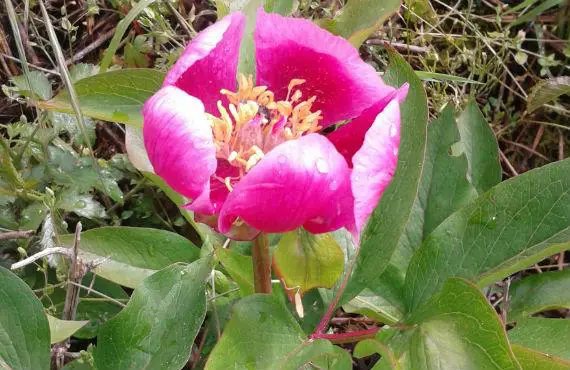
There are many plants wild that stand out, well for its flowering, good for its properties. For its flowering, we can highlight the Peony or the Primrose, for its properties, the Lavender or the Yarrow.
The Peony is also known as bush rose, as this plant is found in any bush or forest. It is a plant that can reach a meter in height and produces large, scented flowers of various colors, the most common being pink. Its flowers are very beautiful but very delicate, since the petals can fall very easily, even just with rainwater. There are multiple kinds of Peony, with double or single flowers. It blooms in spring, although it is a slow-growing plant. It multiplies through divisions of kills.

The Primrose is a low plant that produces flowers with five petals. There are all colors, however, the wild ones are usually yellow. It is a plant that blooms about March. It is resistant to cold and likes humidity. It can be reproduced through seeds or by transplanting the plant.

Lavender is a shrub that blooms from spring to fall. Its flowers are purple and it is a very aromatic plant. A plant in the window prevents mosquitoes from entering the house. The dried plant is the most used. To dry it, a bunch of flowers with their stems are collected, tied and hung upside down in a ventilated place. These dried plants can be put in cloth bags to perfume the cabinets.
In addition, if an oil is prepared (macerating the fresh flowers in a pot with oil in the sun for 15 days) it is good to cure foot pain, lower back pain and rheumatic pain.

Yarrow is another wild plant that is characterized by having many small flowers within the same stem. Its flowers can be white or pink and bloom from summer to autumn. With the dried plant, teas are prepared that are good for menstrual cramps.
More information – Wild rose.
